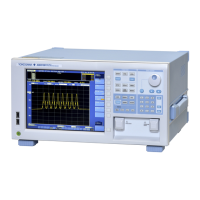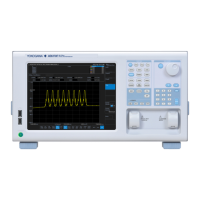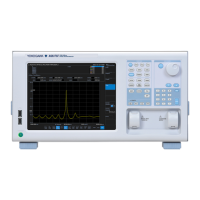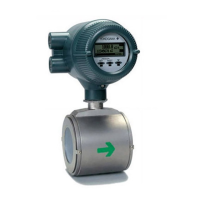3-31
IM AQ6370D-01EN
Preparing for Measurement
3
4
5
6
7
8
9
10
11
App
Index
Second-Order Diffracted Light
The monochromator in this instrument uses a diffraction grating, and when light in a
certain wavelength range is input, a “grating ghost” of second-order diffracted light
appears.
Therefore, it is important to understand this distinctive characteristic in order to correctly
analyze the measured results from the instrument.
The graph below shows the correlation between the wavelength displayed on screen and
the actual wavelength.
The displayed wavelength is on the horizontal axis, with the true wavelength on the
vertical axis. The solid lines in the graph indicate correspondences between displayed
and actual wavelengths. The thick solid line is the correlation with the correct light
spectrum (of course, the displayed wavelength and actual wavelength match), and
the thin solid line shows the correlation with the ghost spectrum of the second-order
diffracted light.
For example, if 633 nm light is input, a horizontal line is drawn at 633 nm on the vertical
axis, and the point of intersection on the graph of the line is the displayed wavelength.
From this, you can see that besides 633 nm, a grating ghost appears at 1266 nm.
Relationship between the Wavelength Displayed on Screen and the Actual Wavelength
500
600
700
800
900
1000
1100
1200
1300
1400
1500
1600
1700
500 600 700 800 900 1000 1100 1200 1300 1400 1500 1600 1700 180
Actual wavelength (nm)
Wavelength displayed on screen (nm)
Second-order diffracted light
1266 nm
Example of measurement in which second-order diffracted light appears at 1266 nm
The ghost spectrum of the second-order
diffracted light
3.9 Important Points During Measurement

